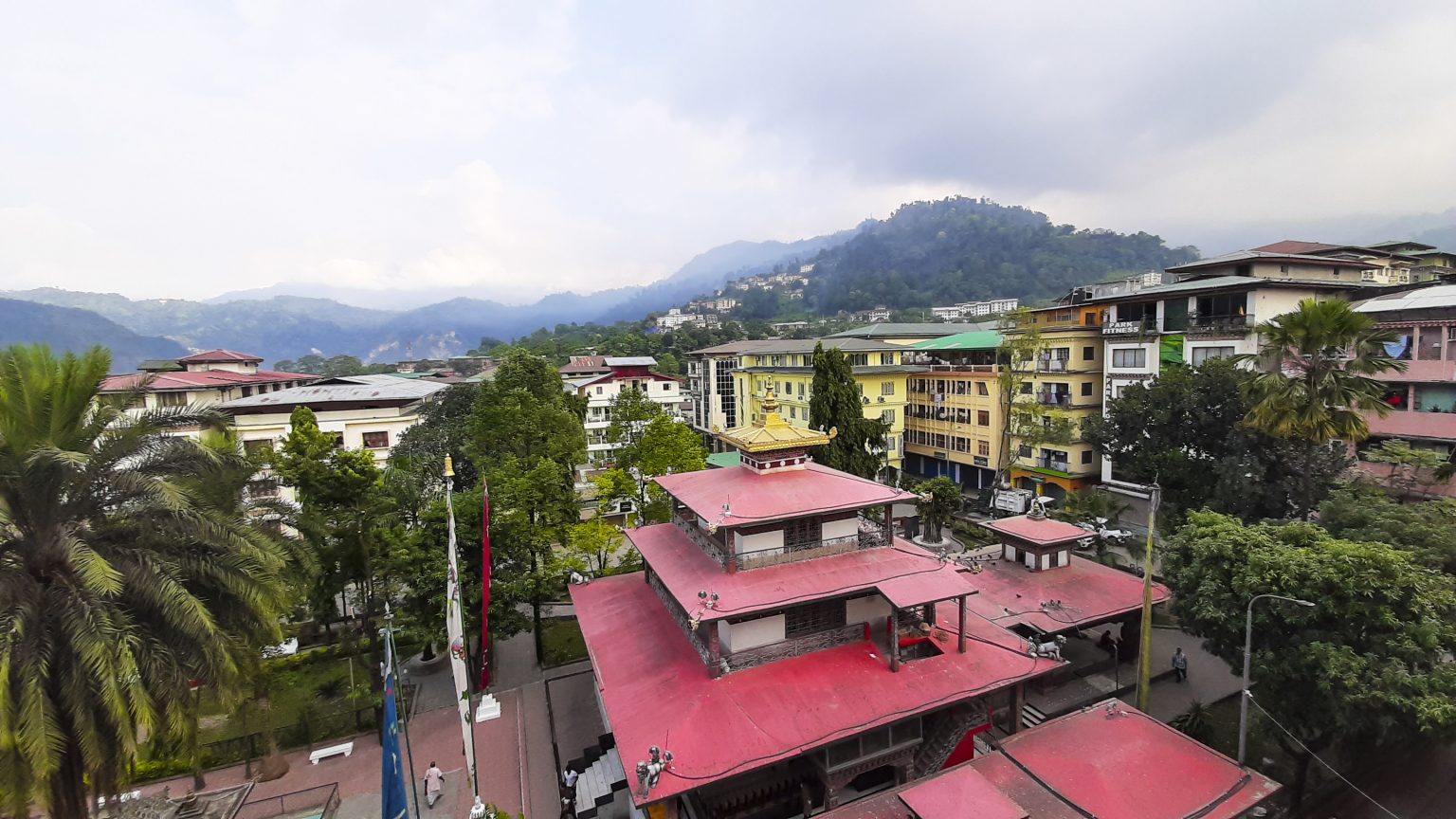Bhutan is a beautiful little nation, tucked away in the lap of Himalayas. Nestled in the Eastern Himalayas, the altitude ranges from 180m to 7800m, and the climate varies accordingly. As you can imagine, with such immense variation in the altitude, the country enjoys a huge variation in climate as well.
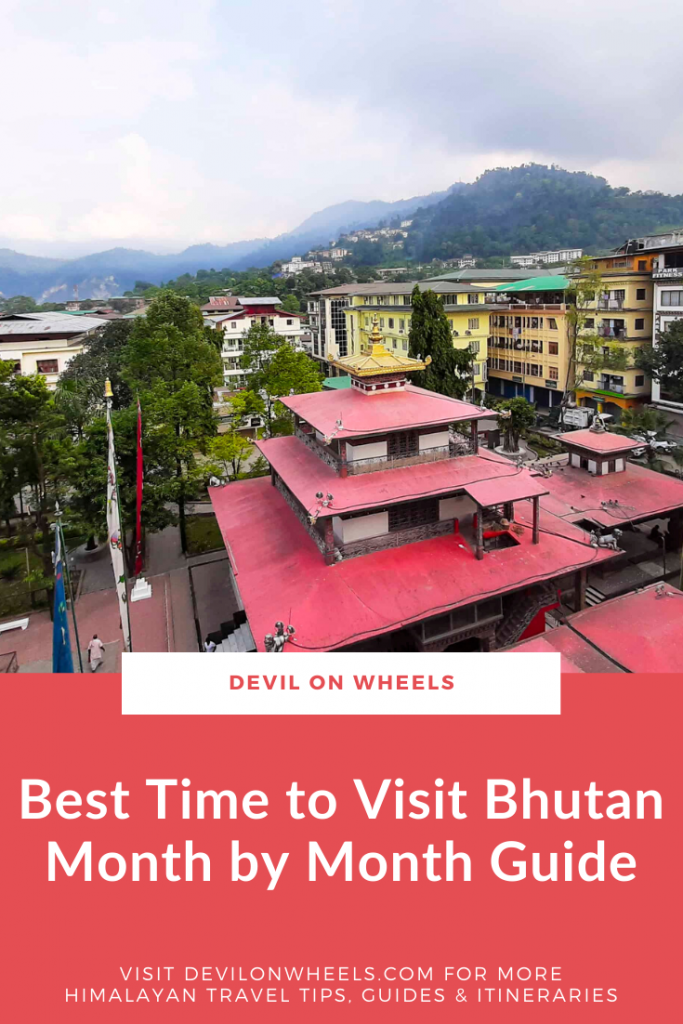
In the northern parts of the country, where altitudes can touch the staggering heights of 7,000 meters, weather conditions replicate arctic! However, if you move southwards, towards the neighboring country of India, you’ll experience hot, humid summer weather and cold, pleasant winters! Bhutan’s climate is also inclined to experience the joys (and hardships that follow) of the Indian monsoons.
Let's quickly dive into the details:
Major Seasons in Bhutan
Let us look at what are the best seasons to visit Bhutan in general. Then we will deep dive in each of them on month by month.
- Winter (December, January, and February)
- Spring (March, April, and May),
- Summer (June, July, and August),
- Autumn (September, October, and November)
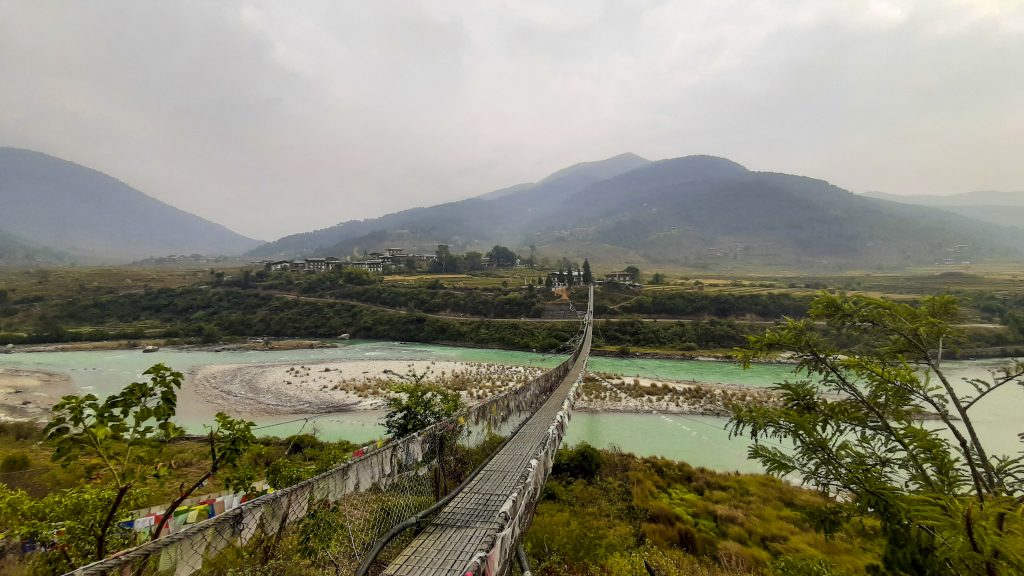
But, you should know that it is naïve to generalize the weather in this land-locked Kingdom. Just to give you an idea, based on the height, the climate can vary from semi-tropical to alpine (For every 1,000 m height increase the temperature drops about 7 degrees Celsius as a rule of thumb).
Other things to keep in mind are that when you’re in the South, the climate is tropical. The range of weather you’d experience goes from 15 degrees in the winter months to about 30 degrees in the summer. Also, Eastern Bhutan is exceptionally warmer than the west while the central region ranges from sub-tropical to very cool winters. North is a story of its own, experiencing harsh winters and quite a bit of snowfall.
The monsoon rains are usually heavy. Winters can be a good time to visit the lower parts, but then the highest areas are freezing. The best times to visit Bhutan are spring (March-May) and autumn (late September – November) when the weather is warm, dry and sunny but always throw in a couple of warm clothes into your traveling gear when you travel to Bhutan regardless of the season.

When to visit Bhutan?
The land-locked Kingdom of Bhutan can truly be classified as a year-round destination. But, climate should define the time you go, based on the activities and exploration you’re interested in. However, Bhutan’s elevation variety – from subtropical valleys to alpine peaks, combined with its extremely jam-packed festival calendars – means you can get what you’re looking for pretty much any time of the year!
If you want a certain comparison, the most common period to visit Bhutan is during fall (September to November), as the weather is warmer, the skies are generally clearer making it particularly suitable for hiking and trekking. Spring (March to May) can be cloudier, and rain can be persistent. However, the wildlife and flowers are at their most vivid. The magnificent rhododendrons, magnolias, and other wildflowers are in bloom, and birdlife is abundant. Also, most festivals take place during this time.
Winter (December – January) can be quite cold. However, the skies are usually clear, providing stunning views and great opportunities for some solace thanks to there being fewer tourists around. However, you should note that in January and February snow may block some mountain passes restricting access from the west to the central valleys.
Pro Travel Tip: Are you wonder how much will be the cost of Bhutan trip? Check our detailed guide on how to calculate the cost or budget of Bhutan trip?
During the summer monsoon season (mid Jun-Aug) a few showers of light rainfall can be expected. The weather will however be pleasantly warm during this period.
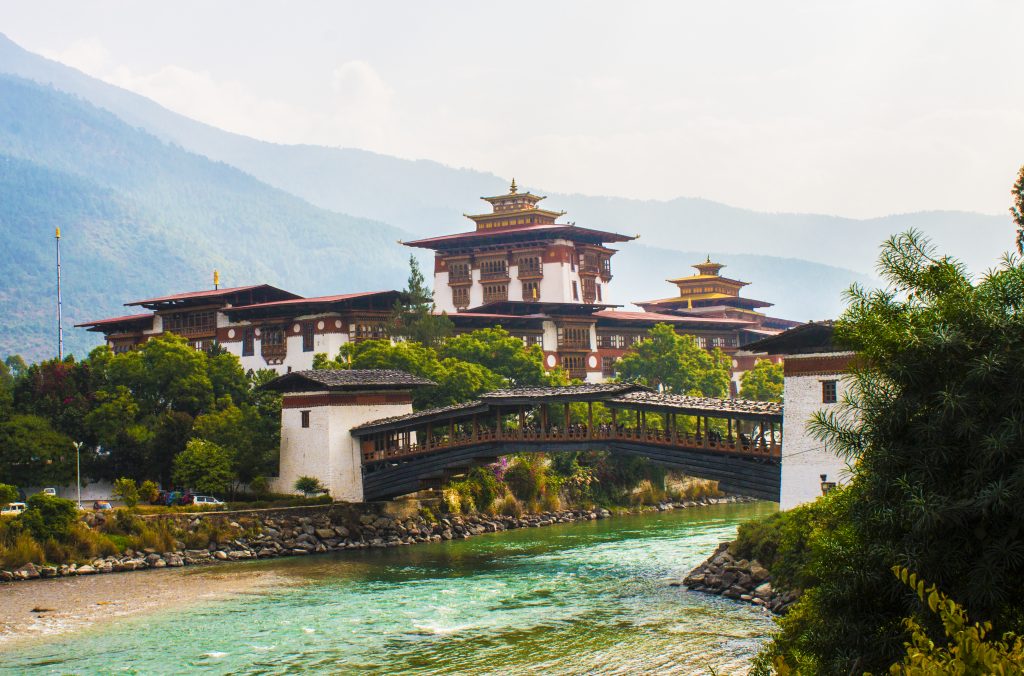
Based on Activities
If you’re an adventure seeker and want to experience the thrill of nature, then the best time to visit would be October to December – as the climate is mild and the skies are clear. But, for natural beauty, head over when the valleys are in bloom from March to May, when rhododendrons are at full bloom and the valleys are at their most fertile!
The best time to visit Bhutan is during the spring months of March to May when the valleys come alive with flowers in bloom. The Himalayan peaks are at their most visible with the clear skies of October, and this is the best time for trekking though temperatures will be on the cold side.
June to August is considered the low season due to the rains, which makes trekking less of an option. However, traveling in low and shoulder seasons will warrant lower hotel rates.
Region-wise Weather in Bhutan
Let us look at how weather is distributed region-wise.
Southern Region
The southern region of the country is mostly flat, and the weather, especially in cities like Gelephu and Phuentsholing is subtropical. The south experiences very mild winters. However, nights can be cold. Spring, from March to May, is hot, especially in April and May, when the temperature can reach as high as 40 °C. Also, to add to that afternoon, thunderstorms become more frequent.
Pro Travel Tip: If you prefer traveling via public transport, check this article which will help you plan a trip to Bhutan by public transport.
If you’re visiting anywhere from June to mid-October, be prepared for the monsoon season – when it rains heavily and incessantly – sometimes becoming sometimes torrential. This heavy rain, coupled with proximity to the mountains – the heat is bad. The best time in this area is from November to February.
| Month | Jan | Feb | Mar | Apr | May | Jun | Jul | Aug | Sep | Oct | Nov | Dec |
| Min(°C) | 10 | 12 | 15 | 20 | 22 | 24 | 25 | 25 | 24 | 21 | 15 | 11 |
| Max(°C) | 23 | 25 | 29 | 32 | 32 | 31 | 31 | 31 | 31 | 30 | 27 | 25 |
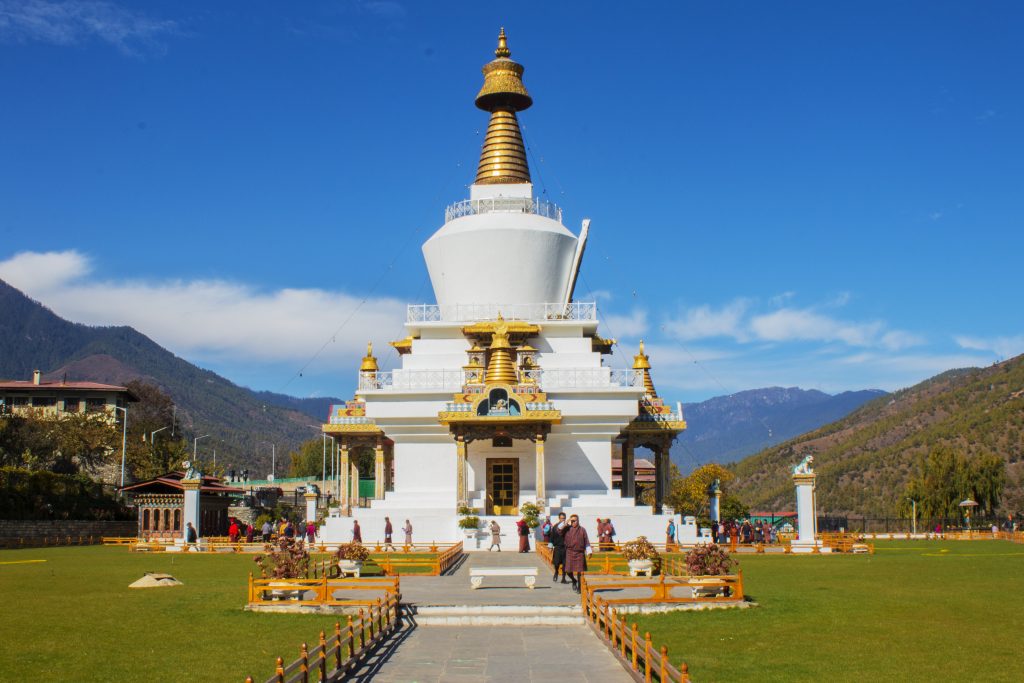
Hilly Areas in Bhutan
Up to the height of 5,000 feet, the climate is progressively milder, with relatively cold, dry winters and warm, rainy summers. With monsoon rains on the southern side, while in some inland valleys, the summer rains are less heavy. For example, in Punakha, located at 4,250 feet, the average temperature ranges from 11 °C in January to 24 °C in July. So, you can see that the summers are hot, humid – no matter what the altitude.
| Month | Jan | Feb | Mar | Apr | May | Jun | Jul | Aug | Sep | Oct | Nov | Dec |
| Min(°C) | 5 | 8 | 11 | 14 | 17 | 20 | 20 | 20 | 20 | 16 | 10 | 6 |
| Max(°C) | 17 | 19 | 22 | 25 | 27 | 29 | 28 | 28 | 27 | 26 | 23 | 20 |
Higher Altitudes
Above 6,500 feet, winters, as expected, will be cold and nights will experience below-freezing weather! Thimphu, which lies at an altitude between 7,200 and 8,500 ft., the average temperature ranges from 5 °C in January to 20 °C in the summer months.
Pro Travel Tip: If you prefer traveling solo, this article will help you plan a solo trip to Bhutan.
While the winters are mostly sunny, the snowfall can always be a pleasant surprise. If you’re planning on visiting in the summer months, be prepared for the monsoons – which are ever so persistent! In the nearby city of Paro, you can find a similar climate. Here are the average temperatures in Thimphu.
| Month | Jan | Feb | Mar | Apr | May | Jun | Jul | Aug | Sep | Oct | Nov | Dec |
| Min(°C) | -3 | 1 | 4 | 7 | 13 | 15 | 15 | 16 | 15 | 10 | 5 | -1 |
| Max(°C) | 12 | 14 | 16 | 20 | 23 | 24 | 25 | 25 | 23 | 22 | 18 | 15 |
If you cross 9,200 ft., the daily average temperature in January drops around freezing, and even summer nights become cold. You can find glaciers and perennial snows at high altitudes, above 16,400 ft.
The northernmost areas, don’t experience any serious monsoons, and the sky in summer is often cloudy. You’ll often be over above the clouds, with peaks peeking out! The highest peak of Bhutan is Gangkhar Puensum, 7,570 meters (28,836 feet) high.
Inland Valleys
In some of the valleys, like that of Jakar, at 8,200 ft., the monsoon impact is minimal, thanks to the presence of certain mountain peaks. Thus, the rainfall is not that much, though it follows the same pattern as that of India/Bhutan monsoons, a winter minimum, and a summer maximum.
Tropical Cyclones in Bhutan
One thing to keep in mind is the tropical cyclones. While Bhutan is extensively distant from the sea, you might assume that there will be zero impact of Bhutan. And you’ll be right that Bhutan does not get impacted directly from the Tropical Cyclones.
Pro Travel Tip: Do not forget to check this complete travel guide for traveling to Central Bhutan.
However, the after-effects of cyclones hitting Bangladesh can be felt in Bhutan as well. These might cause heavy rains or even snowfall at times in the higher up altitudes. Cyclones typically occur from mid-April to early December, and most likely in May-June and October-November.
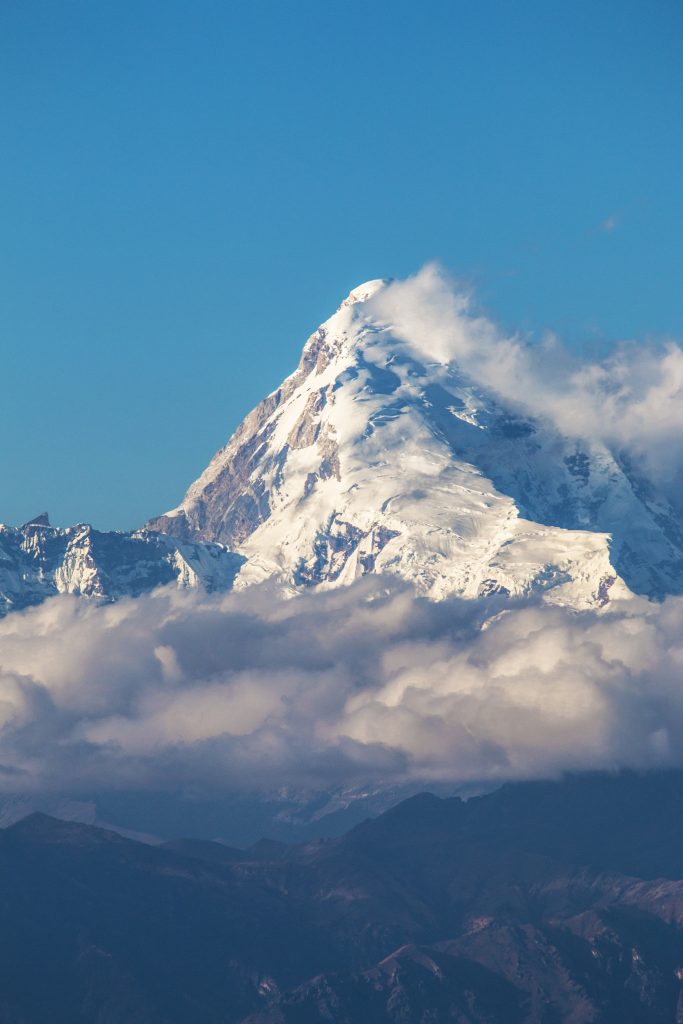
Other things to keep in mind when planning your trip to Bhutan
Yes, the weather will be a huge decision point for when you visit Bhutan. But, one more thing to keep in mind is the festivals – which form the lifeline of the culture of the place.
Here’s a list of festivals in Bhutan upcoming in 2020 for you to plan your vacation accordingly.
- March 2nd – 4th – Jomolhari Mountain Festival (Dangojang)
- April 4th-8th – Paro Tshechu (Paro)
- May 4th-8th – Ura Yakchoe (Ura Valley)
- June 30th-July 1st – Nimalung Festival (Bumthang)
- November 11th – Black Necked Crane Festival (Gangtey Gonpa)
Pro Travel Tip: Do not forget to check this complete travel guide for traveling to Western Bhutan.
What to Pack for Bhutan Trip
So, now that you know when you’d want to visit the beautiful Kingdom of Bhutan, let’s get to what you’ll need to have with you.
Winter Months
If you’re visiting the plains – you should pack light clothes for the day, including a jacket and a sweater for the evening. For places like Punakha, i.e., somewhere around 5,000 feet, you’d need to be packed warmer – with heavier jackets, etc.
For Thimphu and other similar regions around 6,500 feet, warm clothes for the evening are much needed along with a fleece and a light jacket. Of course, do pack your hiking shoes without fail. At higher altitudes, cold weather clothing, synthetic, thermal long underwear, a fleece, a parka, a wind jacket, warm boots are must-haves.
Pro Travel Tip: You can check this detailed guide on how to get all the necessary permits of Bhutan [2020 updates included].
Summer Months
For the plains, you will need to bring lightweight clothing of natural fibers, a light raincoat or umbrella. For regions around Punakha and around 5,000 feet, you will need light clothing and maybe a sweatshirt for the evening, a raincoat and an umbrella.
Moving upwards towards Thimphu and other places at an altitude above 6,500 feet, a sweater, and a jacket for the evening will be sufficient. If you go higher up a warm jacket, a down jacket, a hat, gloves, a scarf will become necessary.
Other things regardless of the weather would include a sleeping bag and a warm jacket for outdoor overnight stays, as well as sunscreen, hydration and plenty of socks.
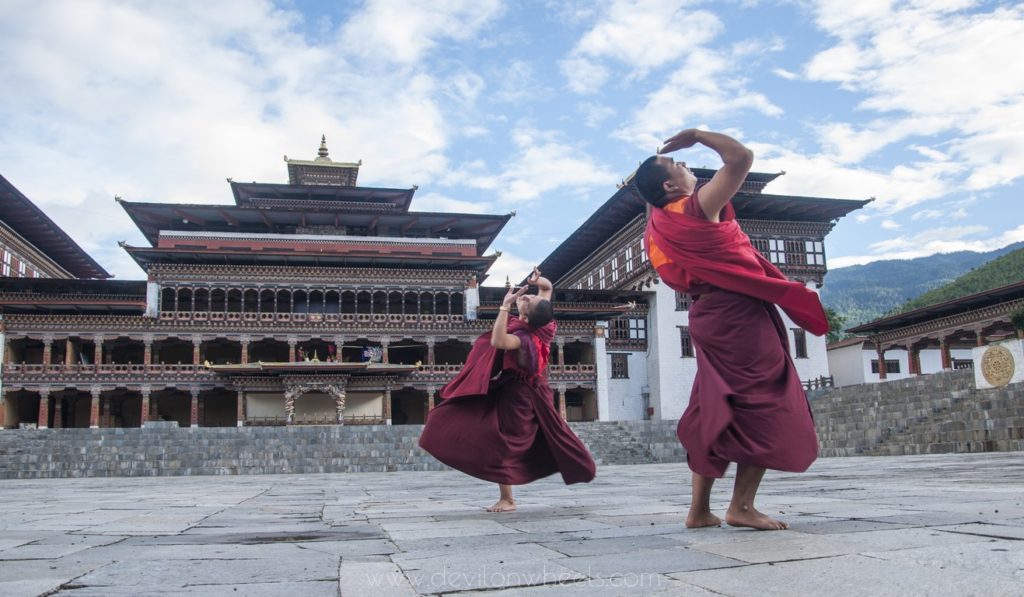
Conclusion
All-year-round destination, Bhutan has plenty to offer no matter where you go. You’ll need to remember that your activities will define when you should visit the place.
Have a travel question?? You can subscribe to my YouTube channel and leave a comment to ask your travel questions about traveling to the Himalayas.
Of course, weather is hugely important when visiting Himalayan regions as your activities can get impacted! Hopefully, this guide will be helpful to you in planning!


